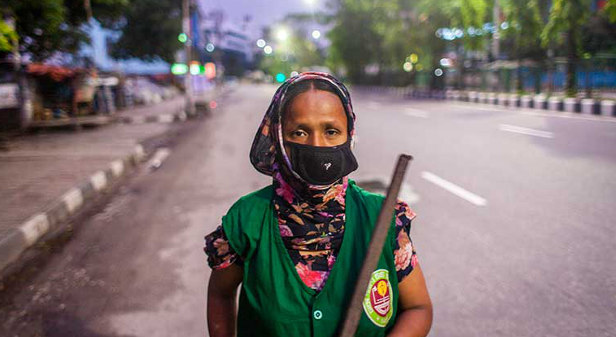|
ILO: Uncertain and uneven recovery expected following unprecedented labour market crisis
Tentative signs of recovery are emerging in global labour markets, following unprecedented disruption in 2020 due to the COVID-19 pandemic , according to the latest report from the International Labour Organization. New annual estimates in the seventh edition of the ILO Monitor: COVID-19 and the world of work confirm the massive impact that labour markets suffered in 2020. The latest figures show that 8.8 per cent of global working hours were lost for the whole of last year (relative to the fourth quarter of 2019), equivalent to 255 million full-time jobs1 . This is approximately four times greater than the number lost during the 2009 global financial crisis.
These lost working hours are accounted for either by reduced working hours for those in employment or “unprecedented” levels of employment loss, hitting 114 million people2 . Significantly, 71 per cent of these employment losses (81 million people) came in the form of inactivity, rather than unemployment, meaning that people left the labour market because they were unable to work, perhaps because of pandemic restrictions, or simply ceased to look for work. Looking at unemployment alone drastically understates the impact of COVID-19 on the labour market.
These massive losses resulted in an 8.3 per cent decline in global labour income (before support measures are included), equivalent to US$3.7 trillion or 4.4 per cent of global Gross Domestic Product (GDP).
Impact by groups and sectors Women have been more affected than men by the pandemic’s labour market disruptions. Globally, employment losses for women stand at 5 per cent, versus 3.9 per cent for men. In particular, women were much more likely than men to drop out of the labour market and become inactive.
Younger workers have also been particularly hard hit, either losing jobs, dropping out of the labour force or delaying entry into it. The employment loss among youth (15-24 years old) stood at 8.7 per cent, compared to 3.7 per cent for adults. This “highlights the all too real risk of a lost generation”, the Monitor says.
The report shows the uneven impact on different economic, geographic, and labour market sectors. It highlights concerns of a “K-shaped recovery”, whereby those sectors and workers hit hardest could be left behind in the recovery, leading to increasing inequality, unless corrective measures are taken.
The worst affected sector has been accommodation and food services, where employment declined by more than 20 per cent, on average, followed by retail and manufacturing. In contrast, employment in information and communication, and finance and insurance, increased in the second and third quarters of 2020. Marginal increases were also seen in mining, quarrying and utilities.
Looking ahead
While there is still a high degree of uncertainty, the latest projections for 2021 show that most countries will experience a relatively strong recovery in the second half of the year, as vaccination programmes take effect.
The Monitor puts forward three scenarios for recovery; baseline, pessimistic and optimistic. The baseline scenario (which draws on International Monetary Fund forecasts from October 2020), projects a 3 per cent loss of working hours globally in 2021 (compared to Q4 2019), equivalent to 90 million full time jobs.
|







